Downhill On Film And With Rangefinder
One of my hobbies is cycling. More specifically downhill where you ride down the hill at relatively high speed ( or slow if you're me ) and hit some jumps and other obstacles. It's super fun and I love it. If I had to choose between cycling and photography I would choose cycling but that is not what I'll write about here.
If I'm cycling I won't be taking pictures. So races in the past I just raced and didn't take any photos. I've only photographed a small handful of races over the years where I couldn't participate for some reason or other ( injury or...fear ).
This year ( and into the future ) I'm mostly stepping away from racing for personal reasons which allows me to actually capture races in photography form. In retrospect it has not been a good year for that because of COVID-19 - not many races actually happened. So far I've photographed two.
Race 1
First race happened on the 14th of June, 2020. Very late in the year when compared to other years but you all know the reason why.
It was a jam style race that's not super official - mostly just to get into the racing season and have some fun. But also race.
I also did race here but about 70% of the day was spent on photography.
Choosing The "Right" Gear
When I've shot races in the past I used either Sony A7S or some Pentax DSLR ( in the olden times ). And it's a wise choice to use these sorts of cameras. If you're after wise choices like this then stop reading now and just take your mirrorless or DSLR camera and go shoot action sports. There won't be many wise choices in this article.
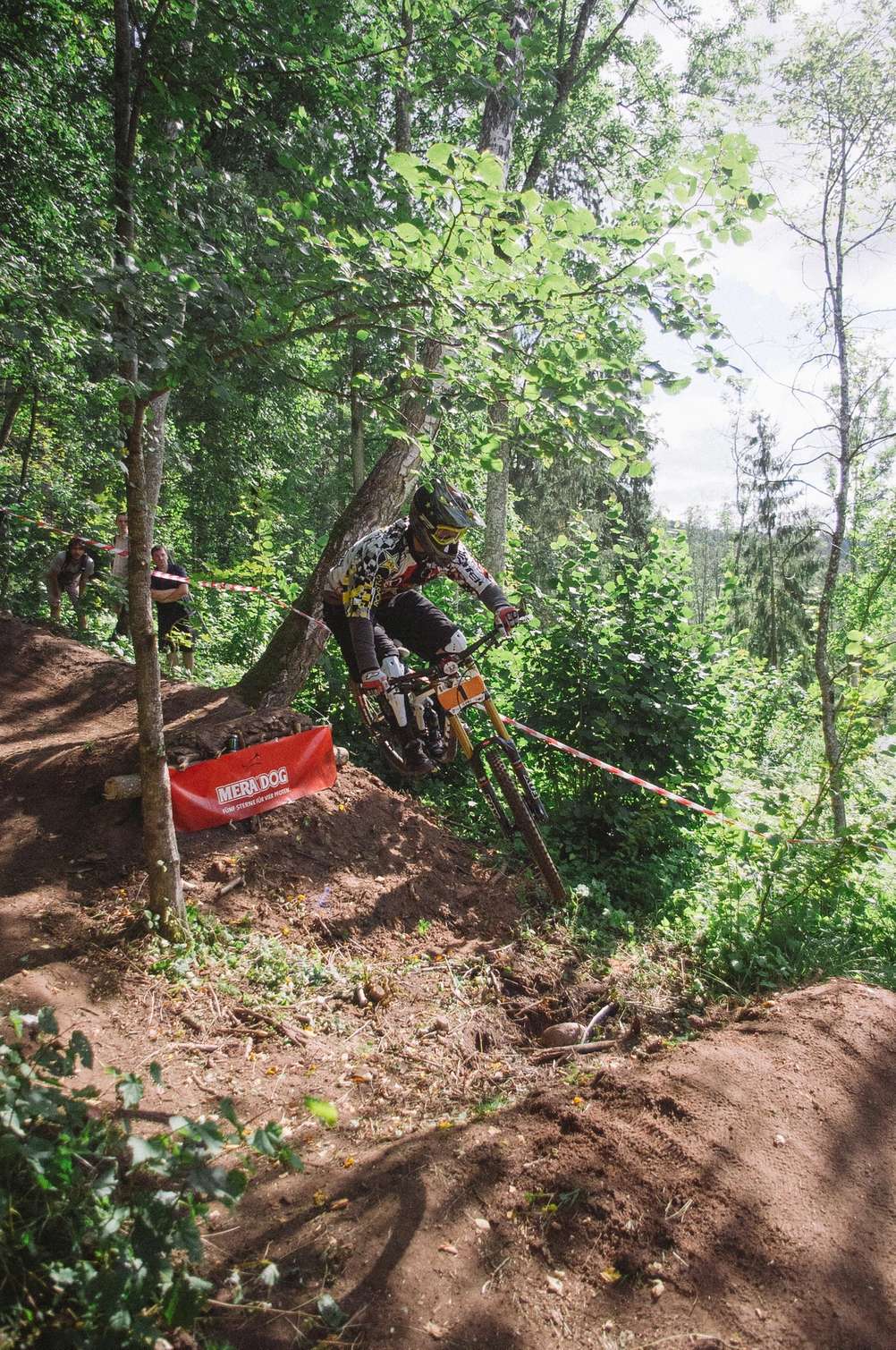
Here's a shot from one of the first ( if not THE first ) downhill races that I shot - in 2013. It's not too great but is usable.
If you're bored then you can see an album of shots from this race here: https://www.flickr.com/photos/ratrijs/albums/72157635242491806
Camera: Pentax K-x
Lens: Pentax 18-55mm f3.5-5.6 AL
I decided that rangefinder ( both analog and digital ) was the correct choice. Well - I knew it wasn't the correct choice but It was an interesting choice. A challenge. Could I make it work?
Because I'm not a professional photographer and nobody expects any results from me - I'm left free to experiment however I like. If I fail - I fail. As long as the process is interesting and fun I take it as a win ( and lesson ).
Why rangefinder and why include film? Just because that's what I've been shooting lately so I wanted to carry this whole rangefinder experience to everything that I do. I love film. I love rangefinders. I love cycling. Let's just join all these things together!
I knew that it wouldn't be super easy but what gave me confidence was how I have shot races in the past. Even with mirrorless / DSLRs I didn't use burst for example. I often just pre-focussed on a certain place where I knew the rider would be ( with 80% accuracy ) and took the picture once the rider was there. Probably not the most efficient way of shooting. Tracking autofocus and burst are likely better but I don't like going through hundreds of photos and also like to know what the picture will be before I take it.
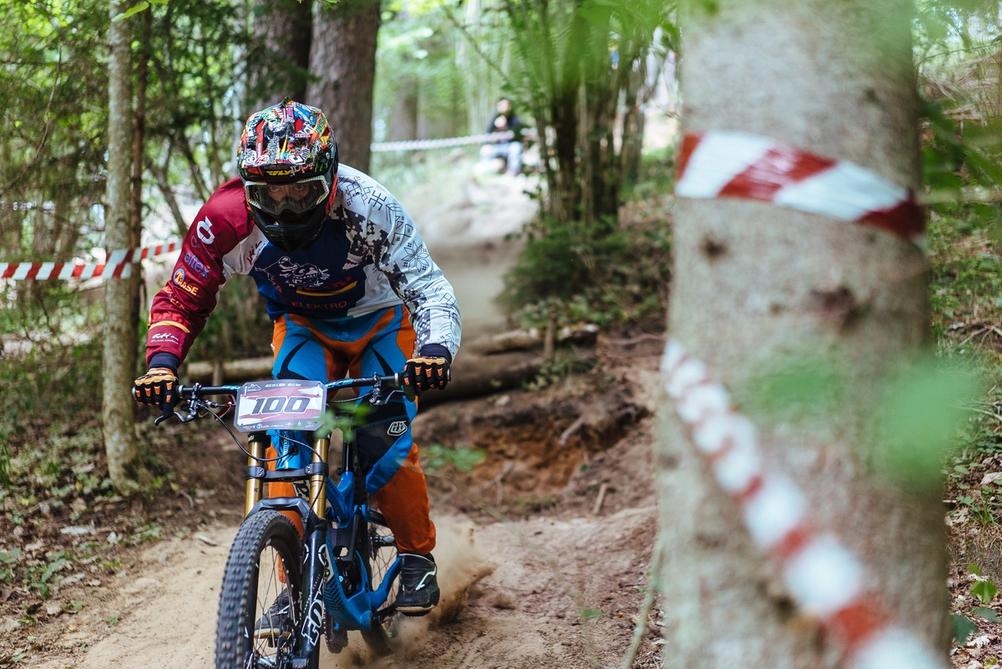
Here's a more recent shot from 2016. It's a more interesting photo and the whole set was better than the first in 2013. Still - I don't think the whole set is that good overall.
Whole set: https://www.flickr.com/photos/ratrijs/albums/72157669325077086
Camera: A7S
Lens: Zeiss 55mm f1.8
Ultimately my "right" gear for this circumstance was:
- Cameras
- Leica M9 ( for all your digital needs )
- Leica M3 ( for when you want to have some analog time )
- Lenses
- 7Artisans 50mm f1.1
- Leica Summicron-M 90mm f2 pre-asph
- Voigtländer 15mm f4.5 ( to use purely on film because on digital it has some fake color in the corners which I wanted to avoid fixing in post )
- Film
- Ilford HP5+
- Kodak Portra 400
Shooting Process
To get reasonably clear moving subjects you need something shorter than 1/500 shutter speed. It was a pretty dark day and most shots would be taken in woods where it's even darker. And for 15mm the widest aperture is f4.5. ISO 400 film was not going to cut it. As a first action I decided to rate HP5+ as EI3200. Portra 400 probably couldn't handle such abuse so I went with a modest EI800 and decided to have some "motion" shots where I ( try to ) drag the camera in line with the moving subject to keep the subject more or less sharp and motion blur the rest.
That was film sorted but M9 is no low light monster as well. Realistically I wouldn't want to go higher than ISO 800 with ISO 400 being the better choice. Luckily other lenses could open up a bit more which was enough to have somewhat reasonable shutter speeds.
For the 15mm lens I just used scale focussing ( not that I could use rangefinder as the lens doesn't have rangefinder coupling ). It's wide and aperture is pretty small so most things are in focus anyway. Depending on how close I wanted the subject to be - I just set the lens at either 2m distance or infinity ( or somewhere in between ) and all is good.
With other lenses it's not so simple. Because I was stuck with using wide apertures, scale focussing would not really work. I could try to rangefinder focus on a fast moving subject but let's not kid ourselves - I can't pull that off.
So I was left with pre-focussing. Like I had sometimes done in the past with non-rangefinders. The difference was that with those cameras I could autofocus on a spot and would be confident that it focussed to the right place. I'm not sure about you but rangefinders don't shine when you're trying to focus on very samy looking things ( like dirt for example ). Also even if I could focus on a specific spot - the rider would be slightly offset from that and I can't focus on thin air. But pre-focussing was what I was left with so prefocus I did.
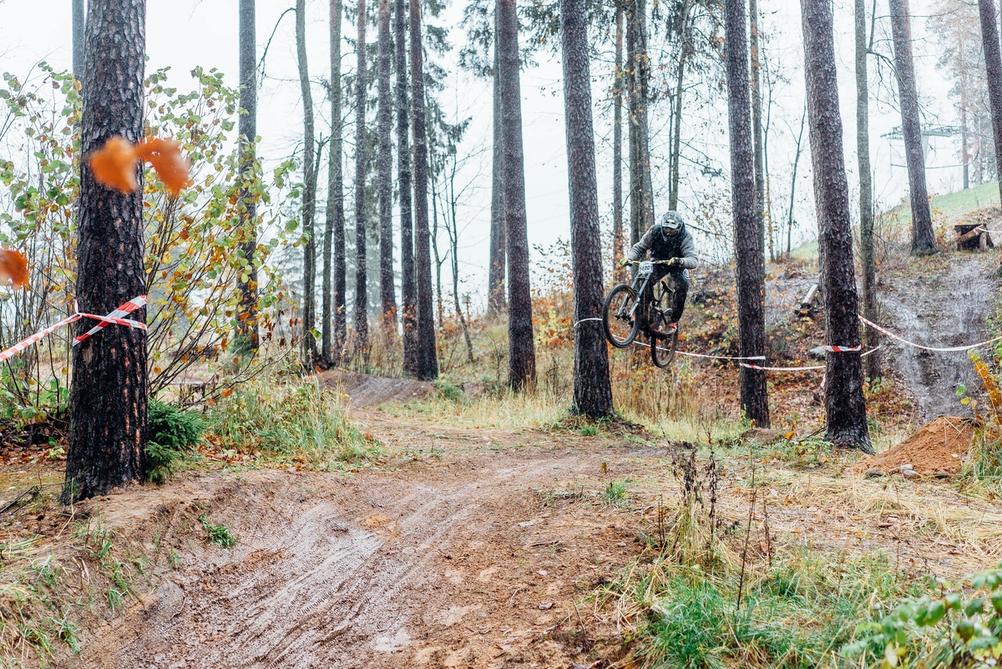
More recent still - from 2017. I imagine this shot used pre-focussing. Most likely to the middle of the jump visible in the picture. It was a rainy day. I didn't have the most fun because of that so although some pictures are OK - overall the set is quite boring I think.
Whole set if you're interested: https://www.flickr.com/photos/ratrijs/albums/72157687053801072
Camera: Sony A7S
Lens: Zeiss 55mm f1.8
For metering I just metered once on my phone for film needs and then adjusted settings manually by eye. For digital I left it at aperture priority to have one thing less to worry about.
So that was my shooting process. I didn't really check digital files whilst shooting as I keep the M9 LCD turned off ( it's not very good anyway - even for review purposes ). And I have been told to not check film before development for some reason.
Development Process
Film was developed and scanned at home.
For HP5+ I used Ilford LC29 in 1:9 dilution for 11 minutes ( in ~20° C ) to get it pushed to ISO 3200.
For Portra I used Compard Digibase C-41 at 30° C and just left it cooking in the chemicals for extra 30 seconds or so to push it to ISO 800.
Film was scanned with Reflecta ProScan 10T.
Post processing for film was limited to some level play only.
Digital files were processed to match them slightly to Portra colors for consistency reasons. I didn't add artificial grain though - grain cannot be made digitally!!!
The Results
The results were...mixed to poor. My miss rate was definitely way higher using rangefinders and film when compared to just using digital mirrorless or DSLR cameras with autofocus.
One issue was the shutter speeds. It definitely needs something like 1/800 shutter speed at minimum to freeze things well and I wasn't always able to get that so there was often motion blur on the subject. Sometimes that can look good but not when all shots are like that.
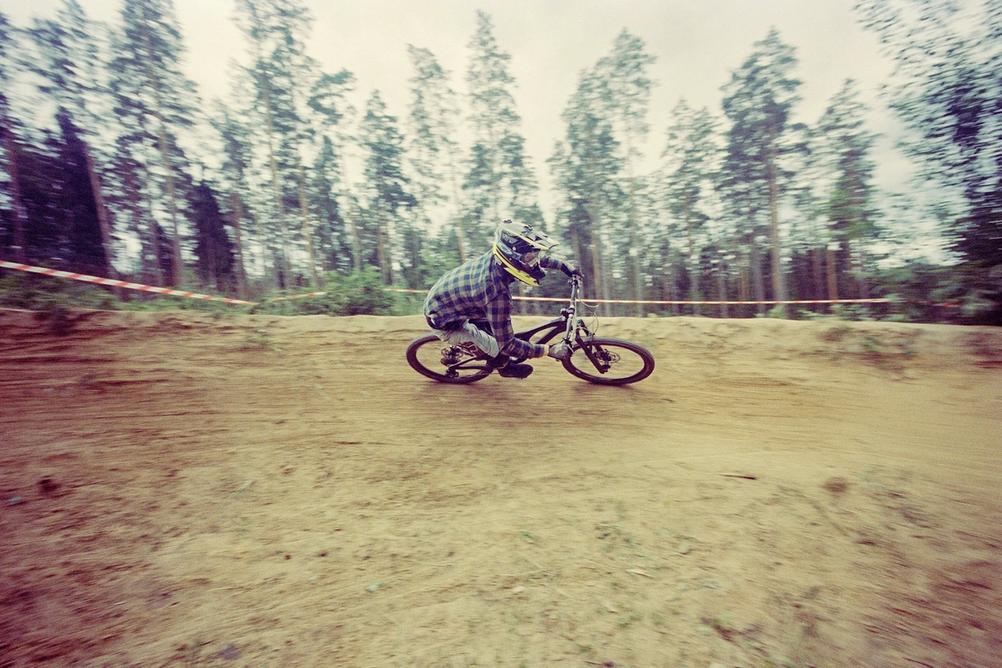
Motion blurred shots can look very cool if timed well. It's not trivial to do that though. And too much of one thing might get old.
Camera: Leica M3
Lens: Voigtlander 50mm f4.5
Film: Kodak Portra 400 EI800
Another issue was focussing on the non-wide lenses. Focus was missed quite often. You really need smaller apertures or autofocus if you want your subjects to be in focus more consistently.
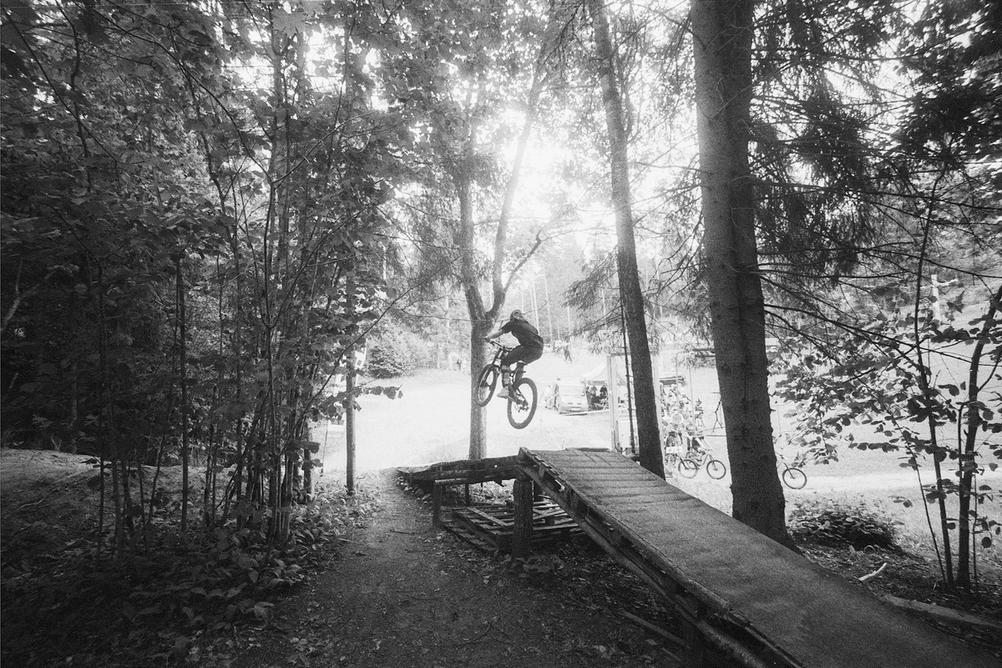
With 15mm you obviously don't have to care about focusing too much. Just focus to pretty much infinity and shoot when needed.
Also HP5+ pushed to 3200 is still holding up reasonably!
Camera: Leica M3
Lens: Voigtlander 15mm f4.5
Film: Ilford HP5+ EI3200
For shots that were in focus and not motion blurred out - they were fine but nothing magical about them.
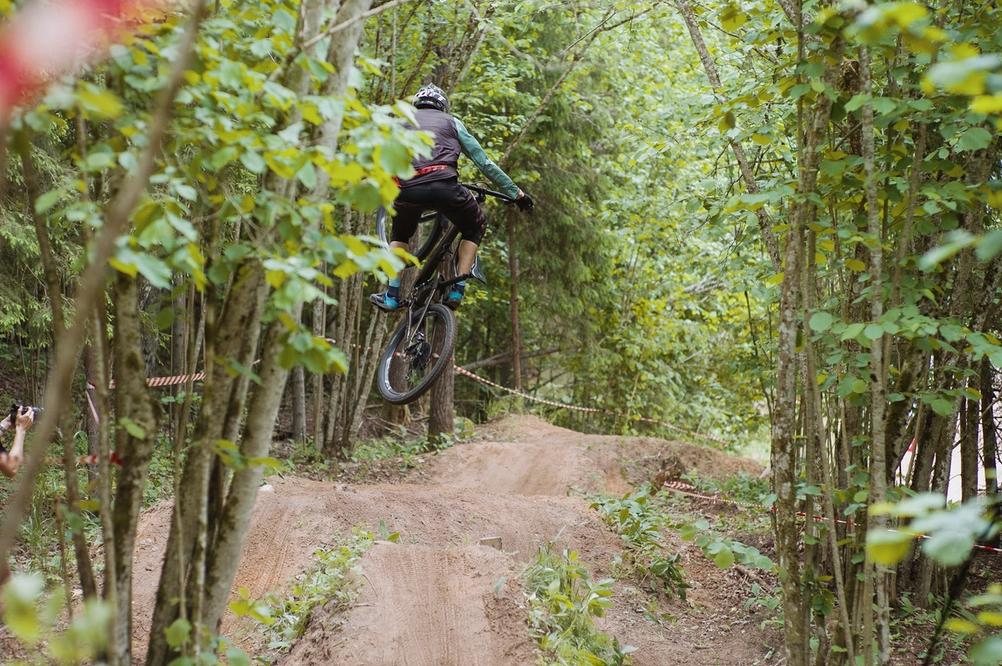
Here's one of the non-magical shots. It's fine. Just not particularly great I suppose.
Camera: Leica M9
Lens: Leica Summicron-M 90mm f2 pre-asph
I have not published the whole set anywhere as I don't think it was too good. I might use some of those shots on another first-try in the future.
Lessons Learned
Rangefinders might not be great for everything. I truly enjoy rangefinder experience better for everyday shots, or trips, or portraits, or landscapes, or anything really. But action sports is my exception. Where for everything else I find rangefinders exciting and great to use - here it felt like a burden.
And for film. I guess the film itself is fine. The main issue is the ISO. Because you need those faster shutter speeds - better light sensitivity is often required and film can't always deliver that. If you know that you'll be shooting in sunlight then it might be fine but overcast days in the woods are just too dark for ISO 400. And there aren't that many high ISO color films anymore.
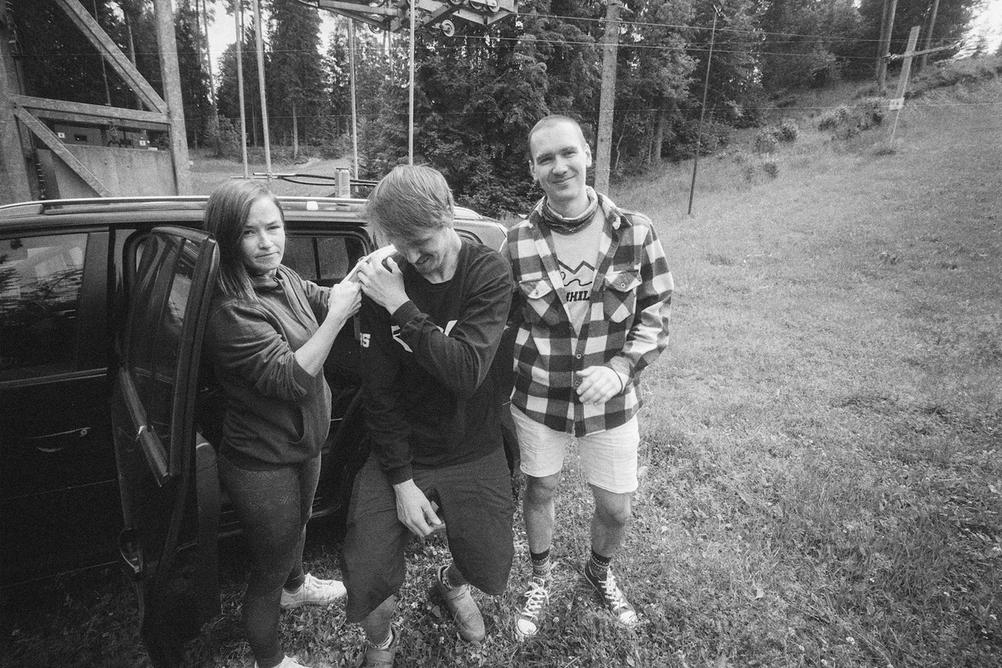
Film ( and rangefinders ) are great for environmental and people shots. You could spend a whole race doing those I suppose ( which could be an interesting project ) but that's not really action sport photography then.
Camera: Leica M3
Lens: Voigtlander 15mm f4.5
Film: Ilford HP5+ EI3200
Will I be able to learn from this?
Race 2
This race happened just recently on 30th of August, 2020.
This was a more serious race as it was all of these:
- Latvian Championship
- Last race of the Baltic Downhill Cup
- Last main race of the year
100% of time was spent on photography.
Previous day it rained heavily so the tracks were muddy and very slippery which made already difficult tracks even more difficult. The day itself was initially overcast but then some sun came out.
Choosing The RIGHT Gear
Have I learned from my past experience? Somewhat!
I mostly went back to my roots and the Sony A7 system. Mostly.
Gear chosen:
- Cameras
- Sony A7S
- Leica M3 ( Film? Rangefinder? But you said that you've learned! )
- Lenses
- Zeiss 55mm f1.8 FE
- Tokina 28mm f2.8 K-Mount ( yes - it's manual )
- Sun Auto Zoom 85-210mm f4.5 K-Mount ( unsure what the auto is for - it's all manual )
- Voigtländer 15mm f4.5 ( to use on the M3 )
- Film
- Kodak Portra 400 ( I don't think you've learned at all... )
I know what you're thinking. Slow film and rangefinder again. You've not learned much... Well kind of but here's my reasoning.
The majority of shots will be taken on the Sony. It has really good low light capabilities so I should be set for freezing the subjects. Why the film then? Well I still like the film look and with the 15mm lens the focussing problem is mostly eliminated as well. So M3 just acts as a box with some shutter speeds to attach this super wide angle lens on. Also having some shots motion blurred might be nice for some contrast.
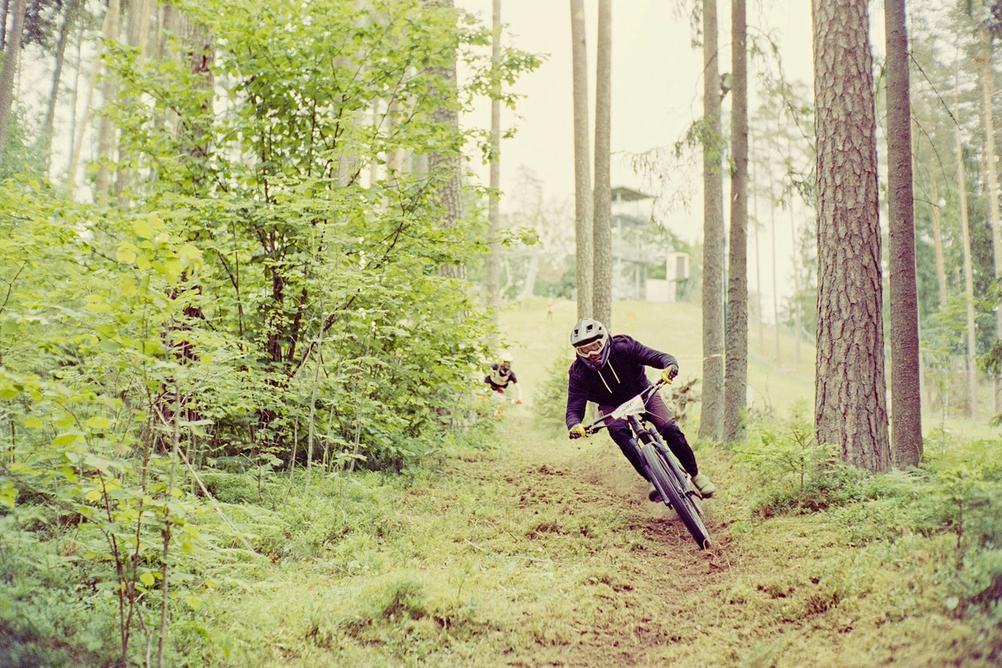
Film can nicely provide some gritty contrast to otherwise clean digital images which is nice and helps with general diversity of all the shots.
This was taken during the first race when I decided to use a different lens for film.
Camera: Leica M3
Lens: 7Artisans 50mm f1.1
Film: Kodak Portra 400 EI800
I think it will work this time!
Shooting Process
90% of shots were taken with Sony. Mostly in manual mode with shutter set to 1/800, aperture set to what I felt would look good and auto ISO ( because this camera can go really high on ISO and still look good ). Around 60% of those were taken with the Zeiss lens which can auto-focus and is an all round fantastic lens. A7S is relatively old so it doesn't have super fancy tracking autofocus but continuous autofocus with the focus point set on where I want works just fine. Only some shots missed focus. There's no competition with rangefinder focusing. Sony wins and rangefinder didn't even reach the finish line.
I also shot quite a few shots with the 28mm. Sadly, at location I found that aperture is stuck wide open. Not too big of a deal but I would've liked to use f4 or something to better nail focus as it's a manual focus lens. Still because it's quite wide and f2.8 isn't too large it worked out fine. I just set the focus roughly where I wanted using peaking and shot without thinking about focusing after. Worked well. I quite like this lens. It's not super great optically but it does render some nice muted colors that I like. Almost like...film.
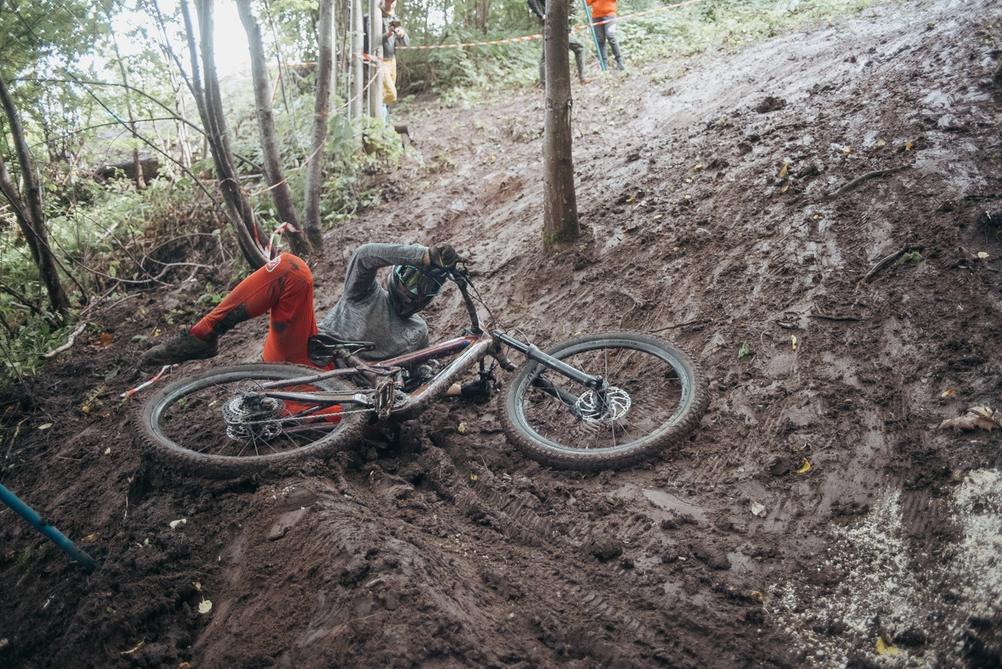
Spoilers - this shot is from second race.
It shows the muted rendering of the 28mm lens that I really like.
Camera: Sony A7S
Lens: Tokina 28mm f2.8 K-Mount
I did try using the tele-zoom as well but that wasn't fun. It's manual. Optical quality isn't too great. I was basically stuck with pre-focussing on somewhere and waiting till the subject reaches that spot which is a hit and miss with such a long lens. Tele does give a nice perspective but it has to be autofocus for it to work well and I don't have any autofocus tele lenses.
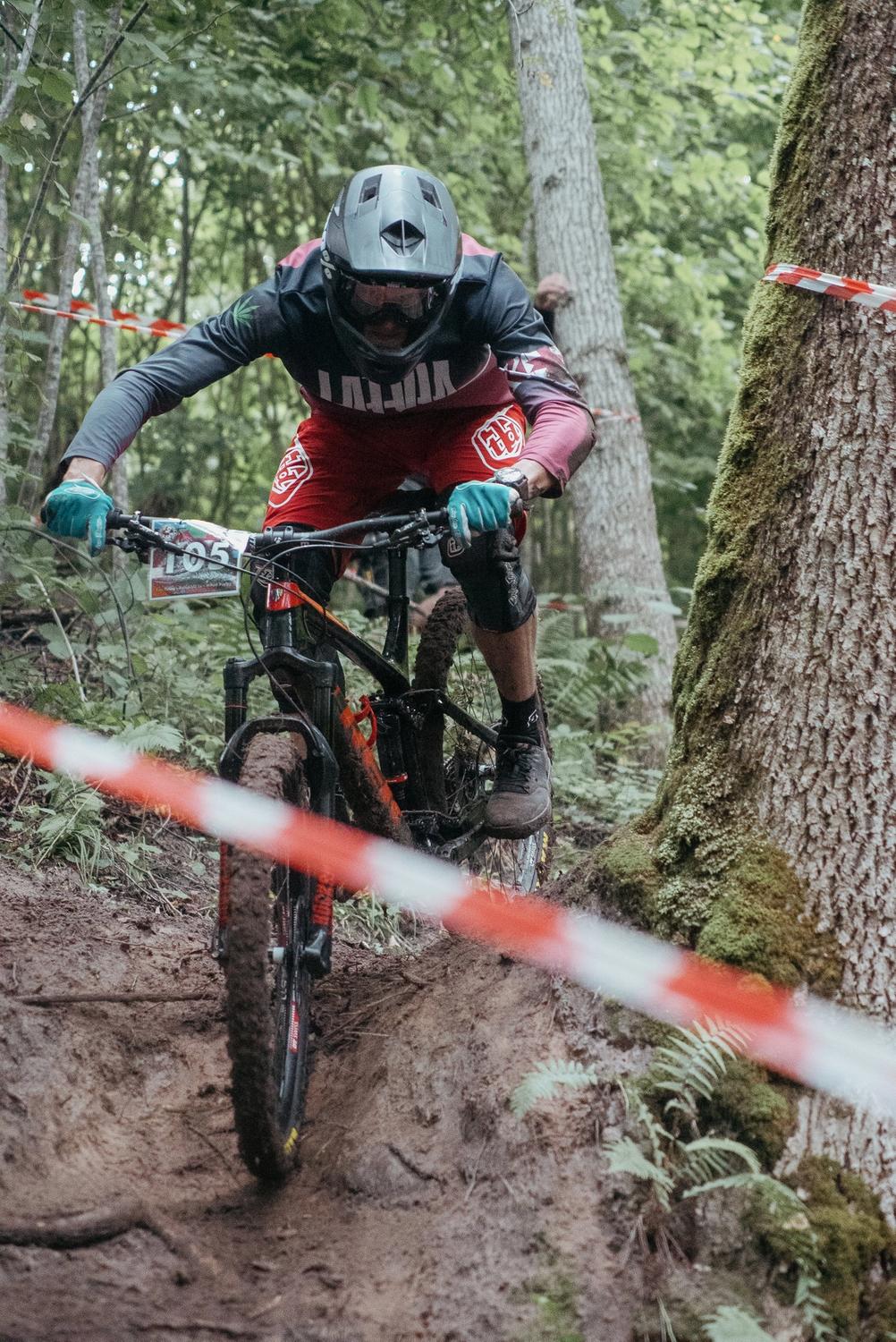
More spoilers from second race.
This shows the tele-zoom at work. Long lenses can give an interesting, compressed perspective but when it has to be used manually there are too many misses.
With M3 and 15mm I just scale focussed as before. I couldn't get fast shutter speeds again and I also didn't want to push the film so mostly I resorted to trying to move my hands together with the subject.
Development Process
This time I used external service to develop and scan the film as I wanted to compare colors vs. home development and scan. Outside of that - just tweaked some levels as usual and nothing else.
For digital - this time I didn't try to match it with Portra as I'm not that good with matching and I liked a slightly different look. Mostly I just made them a bit more flat / muted by reducing the dehaze tool and tweaked colors to my liking. This made things less punchy but easier on the eyes in my opinion. Not everyone might like the style and something more punchy would get attention easier.
Sidenote: Sony did have some issue in the middle of the shoot where it saved each file thrice for whatever reason so I had to manually deduplicate. No idea why. It did that for about 100 shots or so and then went back to normal. Only noticed it after importing pictures as I don't tend to look at them on camera.
The Results
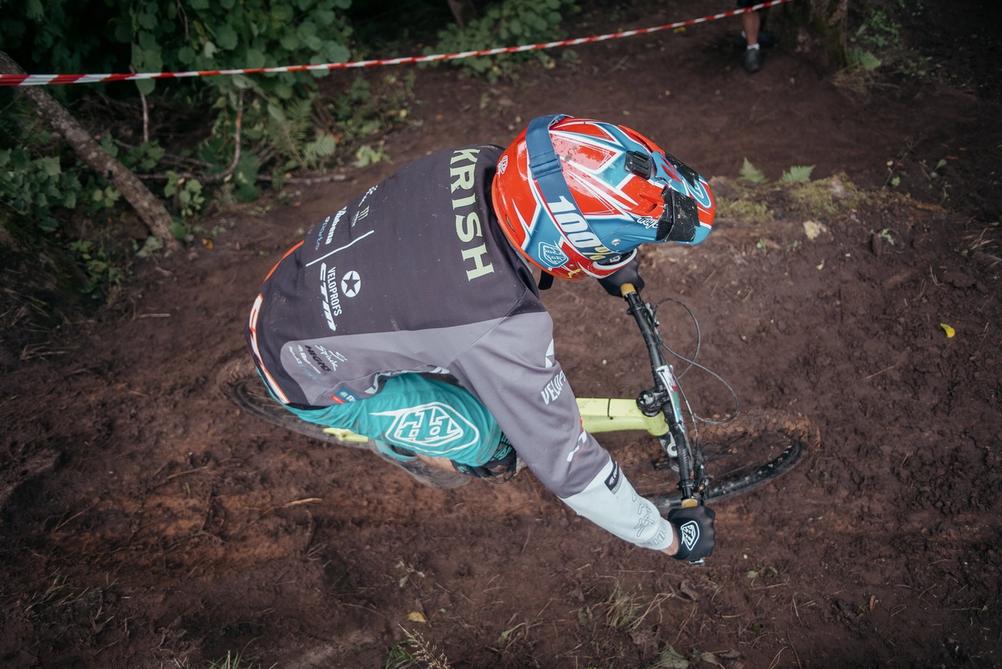
Weird perspectives can give some interesting results.
Camera: Sony A7S
Lens: Tokina 28mm f2.8 K-Mount
I like them. The hit / miss ratio is really good. I also feel like film provides a nice contrast to digital files to keep it more engaging to look at the whole set. Partly it's because it's mostly shot in a way that exaggerates motion and partly because film is magic.

Film doesn't hold back and looks good!
Camera: Leica M3
Lens: Voigtlander 15mm f4.5
Film: Portra 400
It's definitely safe to say that there are more misses on the film side but only because it's not always easy to track with the moving subject. But when it works it looks quite cool.
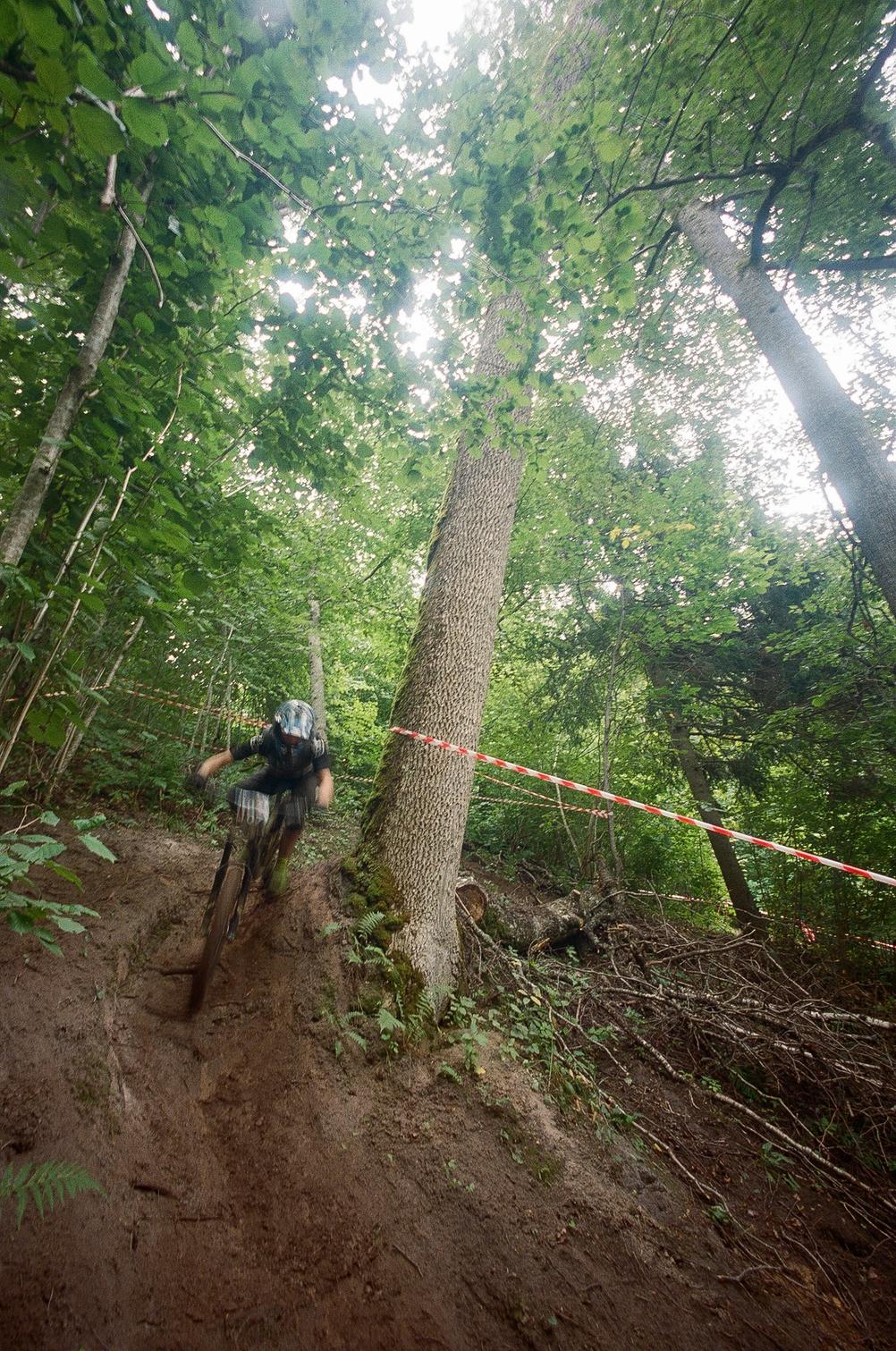
I also experimented with keeping the environment static and letting the rider be the blurred object. It can look OK if used once or twice but any more than that and it starts to look like a mistake.
Camera: Leica M3
Lens: Voigtlander 15mm f4.5
You can see the whole set in this Flickr album. It's quite a beast though with more than 300 images.
Lessons Learned
Autofocus exists for a reason. Even if you're a hardcore manual focus person - it does sometimes make sense to lean on technology for a bit to achieve better results. There's no shame in that.
Film, whilst not great as the primary format for action sports photography, can still be used to give the set a nice feel and contrast to avoid samy-ness ( a real word - I promise ).
Would I want to shoot action sports with a rangefinder again? Maybe, but it would have to be a more modern one that can handle higher ISO ( someone gift me a M10D? ). Or it has to be a really bright day and open space.
Overall Outcomes
I'm glad I tried this as I believe that I gained something. Second race shots are probably my favourite of all action sport shots that I've made. And with a decent hit rate.
The main lessons for me are that rangefinders might not be ideal for everything - even for me. And also that autofocus exists for a reason and can be used for good!
I will have to think of something new to try for the next action sports race. I'm thinking medium format ( I don't even have a medium format camera...yet ).
Fun fact. I did take M9 to the second race as well - in case it would come in useful. I didn't take it out of the bag not even once.
